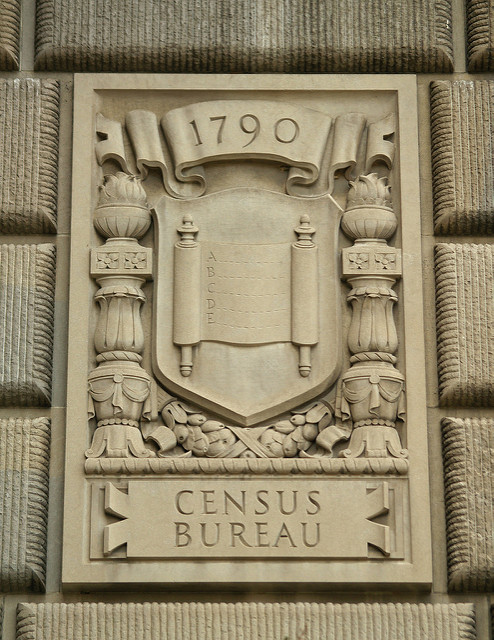
Photo by Flickr user takomabibelot
One of our country's oldest institutions, the U.S. Census Bureau, is at the forefront of modern government efforts. Those efforts are numerous and disparate, from general directives to do more with less, to digitization and consolidation initiatives, to the “Cloud First” mandate, and the pushes for agile and open source development.
At the heart of almost all modernization initiatives is the ability to collect and parse through massive stores of data. The effective use of "big data" is driving brand-new insights in government, insights that would not have been possible without analytics technology.
Recently recognized as a finalist in the ACT-IAC Igniting Innovation Awards, the U.S. Census Bureau exemplifies the transformative potential of Big Data analytics. The Census Bureau is tasked with the unenviable task of accounting for - down to the person - an increasingly diverse U.S. population of 330 million people, spanning 140 million households. In preparation for the upcoming 2020 Decennial Census, the bureau has revolutionized its approach, using the latest technology and solutions to address challenges that have been inherent since the first census of 1790.
The rate at which people respond to the census has dropped over the last several decades. This has forced the Census Bureau to increase the number of door-to-door visits, thus driving up costs. To improve upon the quality of the 2010 Census, while driving down the associated cost-per-housing-unit, the bureau has creatively designed the 2020 Census to be the most automated, modern and dynamic decennial census in history. Specifically, the upcoming census includes innovative design changes that incorporate analytics technology into four major program areas. These are:
- New canvassing methodologies to ensure the census includes every household in the nation, at its correct address.
- Optimizing self-response to minimize the number of expensive in-person visits to households.
- Using administrative records and third-party data to further reduce visits to households who do not respond.
- The use of technology to improve the productivity of field operations.
The Census Bureau’s revamped, analytics-driven approach is projected to save approximately $5.2 billion when compared to the cost of repeating the design of the 2010 Census.
The Census Bureau’s revamped, analytics-driven approach is projected to save approximately $5.2 billion. Click To TweetTechnology such as statistical modeling and geographic analytics will be used to precisely target field canvassing resources. Automated logistics and streamlined data collection will improve accuracy and further reduce the required number of field staff and infrastructure. Additionally, the census questionnaire will be available online for the first time, accessible even from a mobile device, adding another response option to make the process more convenient.
As we move into the next generation of government, it is critical that we take note of the technologies that will shape it. To learn more about the U.S. Census Bureau’s latest efforts, or to learn about the other award finalists shaping the future of great government, be sure to check out the full list of Igniting Innovation Awards finalists.
